#prince Christopher of Greece and Denmark
Text
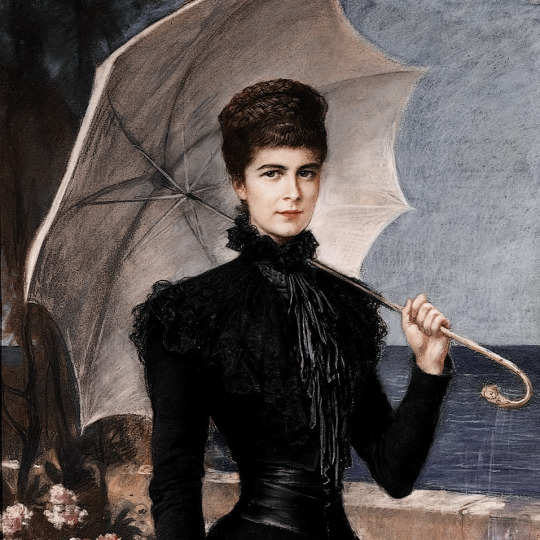

Empress Elisabeth of Austria and her Corfiot palace through the eyes of the Greek royals.
Greece was destined to offer the Empress Elisabeth the hospitality of its soil. She chose Greece as the country where she would hide herself and her sorrow. At Corfu she bought a site of ground from an old Corfiote Statesman called Braïla, and on it she built the Palace which she called "Achilleion", after her hero Achilles, whose statue was in the middle of the top garden terrace, and represented him at the hour of his death, drawing the arrow out of his heel. When in Corfu, it was understood, she was to be strictly incognito, and her wishes were always respected.
One day, suddenly, when we least expected it, she arrived at Athens, having travelled by the ordinary steamer, and called at the Palace accompanied by a lady -in-waiting. She asked the porter whether she could see the King and Queen. On the porter's inquiring who she was, she replied she was "the Empress of Austria." Whereupon we were brought down to verify that statement . It seemed impossible╴but it was the Empress of Austria! Needless to say she obtained her interview, and after half an hour's conversation she took her departure, insisting that her visit should not be returned by my parents.
As she was anxious to study Greek culture, she decided to learn modern Greek, and applied herself to the task with great energy and perseverance. She engaged a tutor for Greek conversation. Her first was Dr. Christomanos, an author and poet, who wrote a charming life of the Empress, which was translated into several languages. Her last was Count A. Mercati, who afterwards became Master of King Constantine's household.
Accompanied by her tutor, the Empress used to go off on a five or six hours' walk, all over the island; and even for the picturesque ceremony of combing and brushing her hair the tutor had to be present, talking Greek to her all the time. She learnt to speak Greek quite faultlessly. In the arrangement of her house the Empress took great pride, setting up the statues of all her new "Gods"; Sophocles, Euripides, Plato and Aristotle. She also had a statue of Heine, the poet, erected in a shrine.
When the Kaiser bought the Achilleion, he at once banished Heine, and raised Achilles from his recumbent position into a standing War Lord, with gilded helmet and shield, so that the first sight of Achilleion should be his glittering helmet.
It is a pity that the Empress tried to improve the natural beauty of the spot. Her lack of taste, I may even ungraciously say her eccentricities, were almost an eyesore. There was a grotto of artificial rock and mirrors, destined as a home for monkeys, who luckily never came to inhabit it. Though the island abounded in oranges, she sent to Italy for her fruit.
The view from the terrace over all the plain of Corfu, with its olive groves groups cypresses on one side and the sea and the mountains of Albania on the other one of the most exquisite I have ever seen.
The memoirs of His Royal Highness, Prince Nicholas of Greece and Denmark, My fifty years, 1926.
I was a child when the Empress came to Athens and saw her only once or twice, but I remember her more vividly than many people I knew far better. I imagine it was the same with everyone who came in contact with her. Her brilliant, beautiful and restless personality left an indelible impression.
She was so enchanted with Greece that she decided to build a villa in Corfu. The site she chose could not have been more beautiful, about twelve miles outside the town, set on a high hill overlooking the sea on one side and a chain of mountains on the other. But she was too impatient even to look at the plans and gave the architect carte blanche. So instead of the simple cottage she had intended he erected an orate and hideous palace lavishly adorned with frescoes, statues and bronzes of every description. This atrocity cost the Austrian Govemment twelve million crowns, I believe.
The Empress's life was dominated by the fear of losing her beauty. As she grew older it became an obsession. Hours were spent every moring brushing the glotious brown hair that she wore gathered into two great plaits coiled around her head.
This hair-brushing was a matter of solemn ritual. Any hairs that fell out during the process were carefully collected and presented to the Empress on a silver salver. If their number proved to be too many the entire day was blackened to her.
Once a captain of a Russian gunboat reported that he had seen a yacht coming into the Piraus harbour with a woman seated on the deck whose mass of hair reached down to the ground while two attendants stood behind her brushing it. " That could only be the Empress of Austria." said my father, when he heard the story.
Later in the day a carriage drove up to the Palace and a mysterious visitor was announced, a lady who refused to give her name. It was, as we expected, the Empress Elizabeth.
She insisted on preserving a strict incognito while she was in Greece, although it seemed rather unnecessary, since everyone knew who she was.
She detested nothing so much as being photographed, or even looked at for that matter, and always carried a large fan with her on her walks, so that she could unfurl it and hide her face from the passers-by.
The Empress was a fine woman in many respects, far finer, I think, than most of her biogtaphers have represented her. Intelligent, intuitive, sensitive, she had all the qualities to make a great empress. But she was tragically lacking in a sense of proportion. Even in the small issues of everyday life she had no idea of modera-tion. She could not take anything up without making it a mania.
While she was in Corfu she set herself to learn Greek, although she had gone there to rest. Now Greek is a complicated language and its study is hardly to be recommended as a restful pursuit. The Empress certainly did not regard it as such either for herself or any one else, for she wore out her two teachers, Count Mercati and Mr. Christomanos. Every day she walked ten or twelve miles with one or the other, talking Greek all the way and, even during the hair-brushing ceremony, one of them was always present reading to her.
Her figure became another obsession with her.
Although she was exaggeratedly slender when she came to Greece (she weighed, I believe, only seven stones) no Hollywood film star could have followed out a more Spartan regime. Her constant dieting made her irritable and depressed. Even when she lunched with my mother and father she would often eat nothing but a salad and some fruit, and she would start off immediately afterwards on one of her exhausting walks, skimming over the ground like a restless, beautiful wraith.
The memoirs of His Royal Highness, Prince Christopher of Greece and Denmark, 1938.
#long af post i’m sorry#empress elisabeth of austria#empress sisi#greek royal family#prince nicholas of greece and denmark#prince christopher of greece and denmark
121 notes
·
View notes
Text

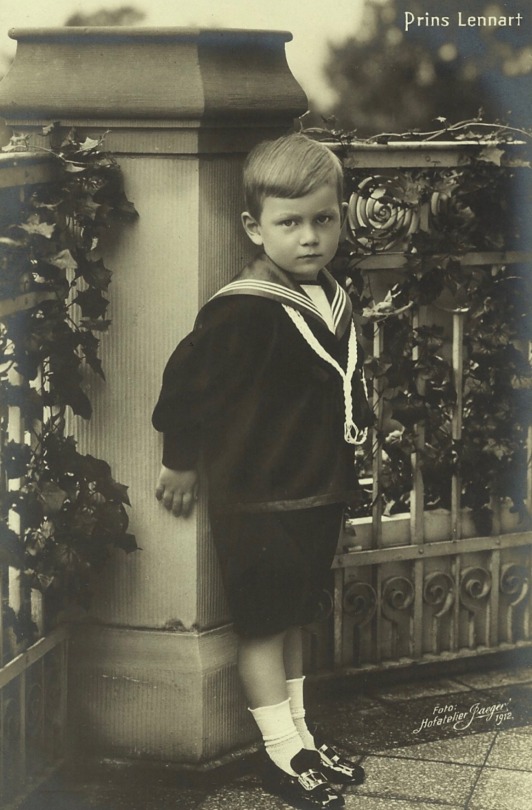



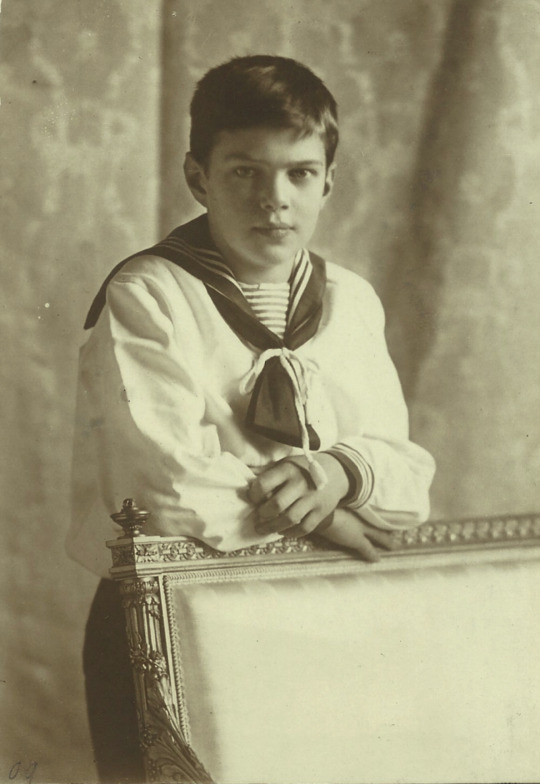
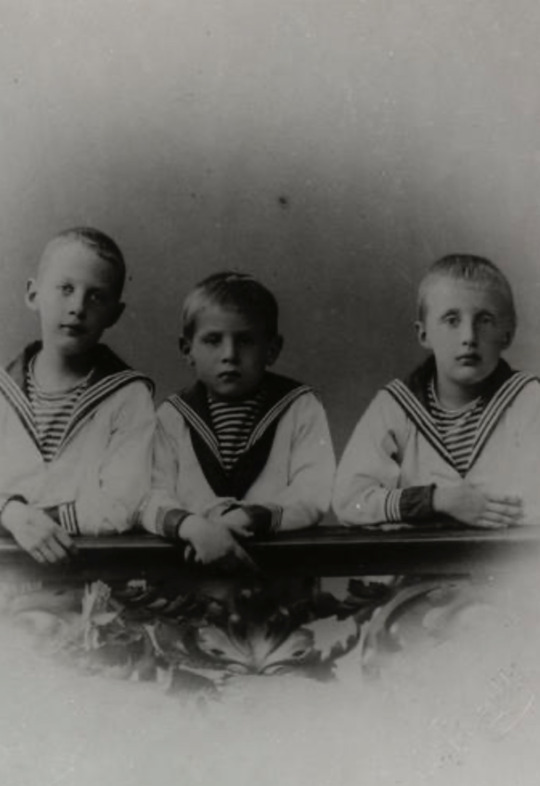
Princes in sailor suits
Even today, once in a while, we’ll see a little boy (or girl) walking down the boardwalk on a beach, or playing by a lake, wearing a little sailor suit. Of course, they are not the uniforms they used to be. But they are still just as flattering and still out there.
Here are several pictures of young princes wearing their sailor suits: Tsarevich Alexis; Prince Lennart of Sweden, son of Grand Duchess Maria Pavlovna the younger and Prince Wilhelm, Duke of Sodermanland; Prince John, youngest son of George V and Queen Mary; Prince George of Greece and Denmark; George Donatus and Louis, sons of Ernst Ludwig, Grand Duke of Hesse; Prince Feodor Alexandrovich, son of the daughter of Tsar Alexander III, Xenia Alexandrovna, and Grand Duke Alexander; Prince Ioann and Prince Gavriil Konstantinovich and between them, Prince Christopher of Greece and Denmark.
And to cap the post, two of our present royalties, looking their handsomest wearing sailor suits.

#European royalty#sailor suit#tsarevich alexey#prince lennart bernadotte#Prince Ioann Konstantinovich#Prince Gavriil Konstantinovich#Prince Christopher of Greece and Denmark#Prince George of Greece and Denmark#Prince Feodor Alexandrovich#Hereditary Grand Duke George Donatus Prince Louis of Hesse#Prince William of the United Kingdom#Prince Louis of the United Kingdom’s
15 notes
·
View notes
Text

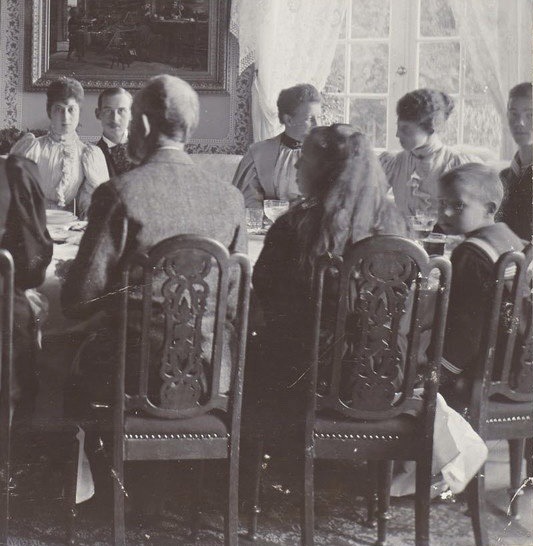
Bernstorff 1895
Princess Victoria of Wales, Grand Duke Mikhail Alexandrovich, Princes Andrew, Christopher of Greece and Denmark, Grand duchess Olga Alexandrovna, Prince Johann of Glocksburg.
on the opposite side
Princess Maud of Wales, Prince Nicholas of Greece and Denmark, Princess Maria of Greece and Denmark.
#princess victoria#mikhail alexandrovich#prince andrew of greece and denmark#olga alexandrovna#johann of Glocksburg#princess maud#nicholas of greece#Maria of Greece#michael alexandrovich#Victoria of Wales#maud of Wales#prince Nicholas of Greece and Denmark#Princess Maria of Greece and Denmark#bernstorff#1895s#russian empire#Romanov#Christopher of Greece#prince christopher of Greece and Denmark
17 notes
·
View notes
Text

Rare photo of King Constantine I of Greece with his children and brother (?) (from left to right) Prince Christopher of Greece and Denmark (?), Prince George, Princess Helen, Prince Alexander of Greece and Denmark, early 1900s
Source: Princess Victoria of Wales’s private albums
#I’m not sure if the boy on the right is Christopher….#looks about right though…#king Constantine i#greek royal family#king george ii of greece#king alexander of greece#princess helen of greece and denmark#princess helen of greece#Helen queen mother of Romania#crown princess Helen of Romania#prince Christopher of Greece and Denmark
13 notes
·
View notes
Photo
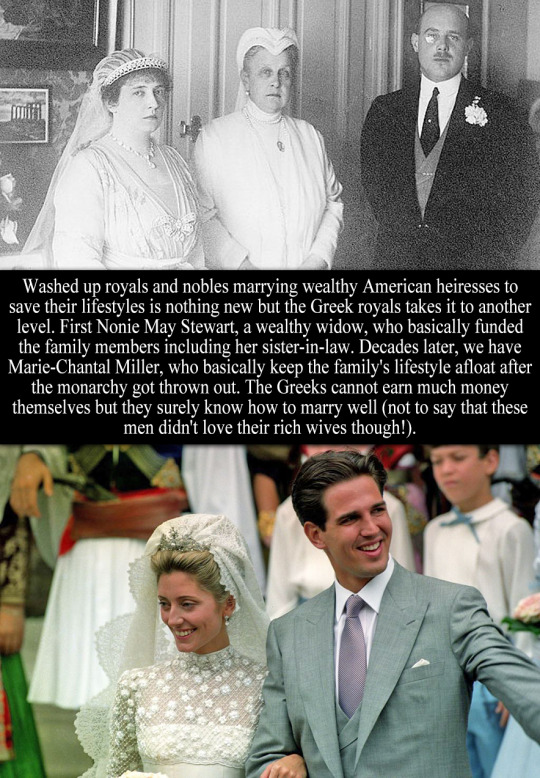
“Washed up royals and nobles marrying wealthy American heiresses to save their lifestyles is nothing new but the Greek royals takes it to another level. First Nonie May Stewart, a wealthy widow, who basically funded the family members including her sister-in-law. Decades later, we have Marie-Chantal Miller, who basically keep the family's lifestyle afloat after the monarchy got thrown out. The Greeks cannot earn much money themselves but they surely know how to marry well (not to say that these men didn't love their rich wives though!).” - Submitted by Anonymous
#Prince Christopher of Greece and Denmark#marie chantal miller#crown princess marie chantal#greek royal family
29 notes
·
View notes
Text
King Carl Gustaf of Sweden’s Golden Jubilee

This year Sweden is celebrating the 500th anniversary of Gustav Vasa being elected king of an independent Sweden as well as King Carl XVI Gustaf’s 50th Jubilee with many events. Of course the one I care about the most is the big gala dinner on September 15th at the Hall of State in the Royal Palace because it will have tiaras! Foreign royals are starting to confirm their attendance so I’ll keep the guest list updated in the lead up to the event.
Sweden
King Carl XVI Gustaf & Queen Silvia
Crown Princess Victoria & Prince Daniel
Prince Carl Philip & Princess Sofia
Princess Madeleine & Christopher O’Neill
Princess Christina & Tord Magnuson
Denmark
Queen Margrethe II
Crown Prince Frederik & Crown Princess Mary
Greece
Queen Anne Marie
Norway
King Harald & Queen Sonja
Crown Prince Haakon & Crown Princess Mette Marit (cannot attend due to her health)
168 notes
·
View notes
Text

"At nine o'clock punctually we had breakfast, which, like our lunch, was a delightfully informal meal, with noservants. Everything was set out on chafing-dishes in front of my grandmother, who sat at the middle of the table. We brought our plates to Amama, who served out all the courses, ourselves changing our plates and spoons at a side table. The chief attraction of the breakfast was the delicious beer-broth called ølebrød in Danish, which never tasted right out of Denmark. It was made of black bread, boiled with black beer—a kind of porter—and served steaming hot in a soup tureen. On the bottom of our plates we put a layer of brown sugar, and the soup was poured on to this and stirred for the sugar to melt; then thick cream was poured on to this. It may sound unappetising, I admit, but it is impossible to describe the delicious dish.
Another dish was the rødgrød or raspberry jelly eaten with sugar and cream. These were surely dishes for the gods. All the Court silver was particularly fine. We ate on silver plates; the cream was served in huge silver tankards. Dinner was at seven o'clock. We had, of course, to change for dinner and then change to go out for a drive with Apapa, and change back into dinner-clothes for supper—composed of tea and sandwiches—after which we played a card game called Loo for very small points".
HRH Prince Nicholas of Greece "My fifty years"
"We children loved the informality of these luncheons. There were no servants in the room and everything was kept hot in chafing dishes on a sideboard. We got plates, knives and forks from a side-table and then we took what food we wanted from bewildering assortment of dishes.One of the dishes I liked best was a soup called ølebrød. It was served for breakfast and is known only in Denmark. It was made of black bread and black beer boiled together, and you ate it out of a soup plate which you had previously lined with brown sugar. Over it you poured thick cream, Written down on paper it sounds like a fearful concoction, but actually it was delicious. Another thing we all loved was a sort of raspberry jelly, eaten with cream, also a Danish speciality, It all sounds vety greedy, no doubt, but to this day the mere thought of those excellent dishes makes my mouth water Dinner was a very formal affair, with the Master of the Household arranging the seating and everyone entering the great dining-hall arm in arm in a stately procession, on the stroke of 6.30. Afterwards we all dispersed to each other’s rooms, to meet again in the drawing-room at nine o’clock for tea and various other kinds of refreshment. Then “Loo” was played, curious old card game which has been popular for centuries at vatious Courts of Europe".
Memoirs of HRH Prince Christopher of Greece
7 notes
·
View notes
Text

✵ December 15, 1930 ✵
Princess Sophie of Greece and Denmark & Prince Christoph of Hesse
12 notes
·
View notes
Note
Who do you think would have had the highest chance of suitor for OTMAA? (Pre-revolution and war) as well as (after revo if they survived).
Olga nikolaevna= Princes Vladimir Paley or Grand duke dmitri pavlovich romanov (there are some who thinks paley might have been).
Tatiana Nikolaevna= Prince Alexander of Yugoslvia or Prince Roman petrovich(idk about roman petrovich but from what I read he was mostly mentioned)
Maria= Prince Carol of Romania or Prince Louis Mountbatten( carol said he liked her at some point)
Anastasia= Princes Frederick of Denmark or Prince Paul of Greece and Denmark(Tbh, I feel like she would chose herself heheh)
Alexei= Princess Ileana of Romania or Princess Elizabeth of Greece and Denmark.
Who do you think would have had the highest chance of suitor for OTMAA? (Pre-revolution and war) as well as (after revo if they survived).
Olga nikolaevna= Princes Vladimir Paley or Grand duke dmitri pavlovich romanov (there are some who thinks paley might have been).
Tatiana Nikolaevna= Prince Alexander of Yugoslvia or Prince Roman petrovich(idk about roman petrovich but from what I read he was mostly mentioned)
Maria= Prince Carol of Romania or Prince Louis Mountbatten( carol said he liked her at some point)
Anastasia= Princes Frederick of Denmark or Prince Paul of Greece and Denmark(Tbh, I feel like she would chose herself heheh)
Alexei= Princess Ileana of Romania or Princess Elizabeth of Greece and Denmark.
To Olga: From your options I choose Vladimir Paley, but I like to imagine her with prince Christopher of Greece and Denmark. He loved her and even talked to Nicholas about it.
To Tatiana: Alexander I of Yugoslavia, he loved her and some sources say it was mutual.
To Maria: Louis Mountbatten, of course, he adored her! Carol of Romania was a horrible husband to Helen, he would have made Maria suffer as he did to Helen.
To Anastasia: We don't know about her preferences but I vote in Paul of Greece and Denmark.
To Alexei: Princess Ileana.
19 notes
·
View notes
Note
Hey hi. I want to ask you a question, can you answer please? Can you tell us about the stories of the Russian Empress Maria and her sister, Queen of England Alexandra, Thrya and their mother, Queen of Denmark Louise, during their Danish holidays? For example, what kind of gossip was circulating among these magnificent four, or how did Queen Louise give her daughters advice? Which of the girls did he consider to be his favourite? How was the relationship between Queen Louise and her daughters? Thanks in advance for your answer 😊🙏
Hi, apologies for the late reply, and thank you for your question.
From what I read, I got the impression that Louise made absolutely no difference between her daughters (say, that she preferred Alexandra and Dagmar due to their titles & positions, as opposed to Thyra, who was merely the titular Queen Consort of Hanover, as her husband had never renounced his rights to the throne). She comes across as a loving and equally attentive mother to all of her children.
In Sarah Tooley's biography of Queen Alexandra you can find the following quote "It has well been said of the Princess's mother, that she trained her daughters 'to be natural girls and useful women first of all, and princesses afterwards", which reveals perfectly how they were brought up - in an unassuming and simple way. There's also another story when during an informal family luncheon with some guests they ran out of butter, and Louise asked Alexandra to go get some more from the larder, much to the surprise of the said guests.
With 4 of their 6 children living outside Denmark, Christian IX and Louise loved nothing better than family reunions at Bernstorff or Fredensborg, when they were all reunited for a while. Louise and her daughters would spend their holidays practising eight-handed arrangements on two pianos, painting, taking strolls & playing various games. According to Christopher of Greece (Louise's grandson), "the world might know them as middle-aged kings, queens and princes - they saw them still as their children, to be praised or scolded when the occasion arose", and how "Queen Alexandra, then Princess of Wales, received many a lecture on the subject of managing a husband." When the Queen became ill and spent most of the time in a bath-chair, her daughters took turns in wheeling her around her rose garden, and taking care of her.
Sources: The life of Queen Alexandra, Sarah A. Tooley & Memoirs of H.R.H Prince Christopher of Greece
8 notes
·
View notes
Note
Hello huhu love your blogs
do you happen to know if some of the greek princesses smoke? I read somewhere Princess Helen and Irene of Greece and denmark smoke?
I think most, if not all, royals from that generation smoked. They might not all have been chain-smokers, but they all smoked from time to time.
There's a story from Prince Christopher of Greece's memoirs about how Empress Maria Feodorovna smoked, but didn't want people to know she did. She was pretty bad at hiding it, though: Christopher mentions he walked into a room once where she was smoking and she immediately hid it behind her back, but he could still see the obvious smoke billowing toward the ceiling.
They didn't really have a sense of the health consequences back then--some even thought it was beneficial--and it was a social habit, like drinking, or a way to relax. And as the 1920s rolled around, it became more fashionable for women to smoke, too. In some places it was almost seen as a symbol of equality and modernity.
I don't think these princesses (including OTMA) probably ever smoked in public though. But there are candid, informal photos of this generation of princesses smoking all over the place.
7 notes
·
View notes
Text

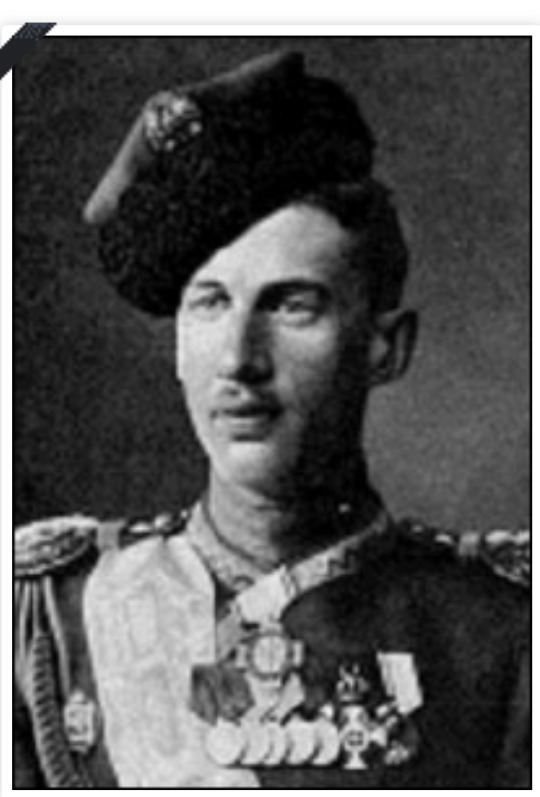
Grand Duchess Olga Nikolaevna and Prince Ioann Konstantinovich
Everybody knows by now that my favorite Romanov changes just about every week. Probably the one I "favor" most frequently is Grand Duchess Olga Nikolaevna. My heart goes out to her. In the time and place where she lived, a twenty-three-year-old girl was frequently already married and had children. Olga had to watch these and many other experiences pass her by from her captivity in Tobolks and Ekaterinburg. They say Olga was thin, withdrawn, sad, and did not seem to be coping as well as the other girls with the imprisonment. I think that Olga's "denial mechanism" was not working as well as that of the others, and she strongly suspected what was coming.
Enough of that....several names floated about (none of them seriously) as matrimonial prospects for Olga, such as that of her cousins Grand Duke Dmitry Pavlovich and Grand Duke Boris Vladimirovich. Prince Christopher of Greece and Denmark had expressed interest. Carol II of Romania had been considered. And then there was another, which I really liked for her (you may not): Prince Ioann (Ioannshick) Konstantinovich, the first-born son of Grand Duke Konstantine Konstantinovich and Grand Duchess Elizabeth Mavrikievna.
The following is a letter from Grand Duke Konstantine to his son when Ioann apparently mentioned the matter to him (not for the first time):
3 December, 1910. Pavlovsk. From bruderschaft [brotherhood, German], you very unexpectedly suddenly turn to Lubochka. You cannot marry her at this point, but without breaking the law, with which you need to familiarize yourself, taking advantage of conversations between AAs. Makarov and Kostya. During one of these conversations, ask for the federal secretary to explain to you the legalization of marriages of the members of the Imperial family. The Tatiana question has not been resolved by far, as it needs a change of the existing law. But let’s assume that it will be changed: then I advise you to be careful. Last year, you wrote to me about your love for Olga Nikolaevna and for Tanya and someone else, and now it’s Lubochka while you are still bringing up Olga Nikolaevna as well. Seems like you do not know yourself with whom specifically you are in love, but without a tested and faithful love, one should not marry.
Ioann was at that age when we fell in love every other day. He did ask the Tsar, who dismissed the idea by not taking the matter seriously, and told Ioann that his daughter was too young (in 1910, Olga would have been 15). The Empress had never liked the Konstantinovichi as potential grooms for her daughters because of their "poor health." Other than that, they were one of the few Grand Duccal families Alix liked.
Ioann married Helen of Serbia in 1911. He fought in WWI, had two children, and was eventually murdered by the Bolsheviks at Alapaevsk in the Urals (along with several other Romanovs, at least one of whom was his brother.) He was 32 years old. Olga died with her family not far from where he was killed, in Ekaterinburg at the age of 23.(gcl)
#russian history#romanov dynasty#imperial russia#nicholas ii#vintage photography#Grand Duchess Olga Nikolaevna#Princess Ioann Konstantinovich#Grand Duke Konstantin Konstantinovich
22 notes
·
View notes
Text

𝘔𝘺 𝘨𝘳𝘢𝘯𝘥𝘮𝘰𝘵𝘩𝘦𝘳 𝘥𝘪𝘦𝘥 𝘸𝘩𝘦𝘯 𝘐 𝘸𝘢𝘴 𝘷𝘦𝘳𝘺 𝘺𝘰𝘶𝘯𝘨, 𝘣𝘶𝘵 𝘐 𝘴𝘵𝘪𝘭𝘭 𝘳𝘦𝘮𝘦𝘮𝘣𝘦𝘳 𝘩𝘦𝘳 𝘸𝘦𝘭𝘭; 𝘸𝘩𝘪𝘵𝘦 𝘩𝘢𝘪𝘳𝘦𝘥 𝘢𝘯𝘥 𝘢𝘯𝘨𝘦𝘭𝘪𝘤 𝘭𝘰𝘰𝘬𝘪𝘯𝘨, 𝘣𝘦𝘪𝘯𝘨 𝘸𝘩𝘦𝘦𝘭𝘦𝘥 𝘢𝘳𝘰𝘶𝘯𝘥 𝘩𝘦𝘳 𝘳𝘰𝘴𝘦 𝘨𝘢𝘳𝘥𝘦𝘯 𝘪𝘯 𝘢 𝘣𝘢𝘵𝘩-𝘤𝘩𝘢𝘪𝘳 𝘸𝘪𝘵𝘩 𝘢 𝘱𝘢𝘪𝘳 𝘰𝘧 𝘴𝘩𝘦𝘢𝘳𝘴 𝘪𝘯 𝘩𝘦𝘳 𝘩𝘢𝘯𝘥. 𝘚𝘩𝘦 𝘢𝘥𝘰𝘳𝘦𝘥 𝘩𝘦𝘳 𝘳𝘰𝘴𝘦𝘴 𝘢𝘯𝘥 𝘵𝘩𝘦 𝘰𝘯𝘦 𝘥𝘦𝘢𝘥𝘭𝘺 𝘴𝘪𝘯 𝘪𝘯 𝘩𝘦𝘳 𝘦𝘺𝘦𝘴 𝘸𝘢𝘴 𝘧𝘰𝘳 𝘢𝘯𝘺 𝘰𝘯𝘦 𝘰𝘧 𝘶𝘴, 𝘦𝘹𝘤𝘦𝘱𝘵 𝘮𝘺 𝘴𝘪𝘴𝘵𝘦𝘳 𝘔𝘪𝘯𝘯𝘪𝘦, 𝘵𝘰 𝘨𝘢𝘵𝘩𝘦𝘳 𝘵𝘩𝘦𝘮 𝘸𝘪𝘵𝘩𝘰𝘶𝘵 𝘩𝘦𝘳 𝘱𝘦𝘳𝘮𝘪𝘴𝘴𝘪𝘰𝘯.
𝘚𝘩𝘦 𝘸𝘢𝘴 𝘢 𝘨𝘦𝘯𝘵𝘭𝘦 𝘭𝘪𝘵𝘵𝘭𝘦 𝘭𝘢𝘥𝘺 𝘸𝘩𝘰 𝘱𝘳𝘦𝘧𝘦𝘳𝘳𝘦𝘥 𝘵𝘰 𝘳𝘶𝘭𝘦 𝘩𝘦𝘳 𝘰𝘸𝘯 𝘩𝘰𝘮𝘦 𝘵𝘰 𝘢 𝘬𝘪𝘯𝘨𝘥𝘰𝘮. 𝘚𝘩𝘦 𝘤𝘰𝘶𝘭𝘥 𝘩𝘢𝘷𝘦 𝘳𝘦𝘪𝘨𝘯𝘦𝘥 𝘢𝘭𝘰𝘯𝘦 𝘪𝘯 𝘋𝘦𝘯𝘮𝘢𝘳𝘬, 𝘧𝘰𝘳 𝘵𝘩𝘦 𝘊𝘳𝘰𝘸𝘯 𝘥𝘦𝘴𝘤𝘦𝘯𝘥𝘦𝘥 𝘵𝘰 𝘩𝘦𝘳, 𝘣𝘶𝘵 𝘪𝘯𝘴𝘵𝘦𝘢𝘥 𝘴𝘩𝘦 𝘤𝘦𝘥𝘦𝘥 𝘪𝘵 𝘵𝘰 𝘩𝘦𝘳 𝘩𝘶𝘴𝘣𝘢𝘯𝘥, 𝘗𝘳𝘪𝘯𝘤𝘦 𝘊𝘩𝘳𝘪𝘴𝘵𝘪𝘢𝘯 𝘰𝘧 𝘚𝘤𝘩𝘭𝘦𝘴𝘸𝘪𝘨-𝘏𝘰𝘭𝘴𝘵𝘦𝘪𝘯. 𝘚𝘩𝘦 𝘳𝘦𝘮𝘦𝘮𝘣𝘦𝘳𝘦𝘥 𝘦𝘷𝘦𝘳𝘺𝘰𝘯𝘦’𝘴 𝘢𝘯𝘯𝘪𝘷𝘦𝘳𝘴𝘢𝘳𝘺, 𝘬𝘯𝘦𝘸 𝘦𝘷𝘦𝘳𝘺𝘣𝘰𝘥𝘺’𝘴 𝘭𝘪𝘬𝘦𝘴 𝘢𝘯𝘥 𝘥𝘪𝘴𝘭𝘪𝘬𝘦𝘴 𝘪𝘯 𝘧𝘰𝘰𝘥 𝘢𝘯𝘥 𝘱𝘳𝘦𝘴𝘪𝘥𝘦𝘥 𝘸𝘪𝘵𝘩 𝘢 𝘣𝘦𝘢𝘮𝘪𝘯𝘨 𝘧𝘢𝘤𝘦 𝘢𝘵 𝘵𝘩𝘦 𝘭𝘶𝘯𝘤𝘩𝘦𝘰𝘯-𝘵𝘢𝘣𝘭𝘦.
- Memoirs of H.R.H Prince Christopher of Greece.
- King Christian IX and Queen Louise of Denmark, 1897.
2 notes
·
View notes
Text
George and Marina: Duke and Duchess of Kent by Christopher Warwick #HouseofWindsor #Audiobook #BookReview
The #AudiblePlus catalog had a few books on the #royalfamily that I had to check out. One was about the #DukeandDuchessofKent, #QueenElizabethII aunt and uncle. #PrinceGeorge and #PrincessMarina both came from royal houses. #Audiobook #BookReview
For eight brief years, before he was tragically killed in a mysterious air crash during the Second World War, Prince George, Duke of Kent, son of King George V and Queen Mary, and his beautiful wife, Princess Marina of Greece and Denmark, were the British monarchy’s, indeed, high society’s, most glamorous royal couple; and as golden royal icons they are still remembered.As a young man,…

View On WordPress
#Abdication#Abdication Crisis#Albert Bridge Books#Duchess of Kent#Duke and Duchess of Kent#Duke of Kent#George and Marina#Grand Duchess Yelena Vladimirovna#House of Windsor#King Edward VIII#King George V#King George VI#Prince Edward#Prince George#Prince Nicholas of Greece#Prince of Wales#Princess Marina#Princess Marina of Greece and Denmark#Queen Elizabeth#Queen Mary#Tantor Audio
2 notes
·
View notes
Text

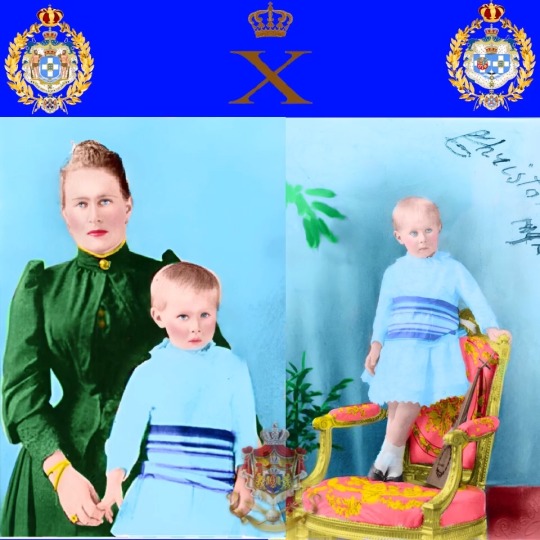








The. 10th of August was 135 years since the birth of HRH Prince Christopher of Greece and Denmark (10 August 1888 – 21 January 1940)
He was the fifth and youngest son and youngest child of King George I of Greece, belonging to a dynasty which mounted and lost the throne of Greece several times during his lifetime. Much of his life was spent living abroad.
Christopher was born at Pavlovsk, Imperial Russia, son of King George I of Greece and Queen Olga, a Russian grand duchess by birth.He was the youngest of their eight children, being twenty years younger than their oldest child, Constantine. He was called "Christo" in the family. His older brothers were future King Constantine I, George, Nicholas and Andrew.
Christopher, like his siblings, was a polyglot, speaking Greek, English, Danish, Russian, French, and Italian. The siblings spoke Greek to one another, and used English with their parents. The parents, however, spoke German to each other.
The Greek royal family maintained close relations with the Danish royal family, to which they also officially belonged. The Hellenic royal line was a cadet branch of the Schleswig-Holstein-Sonderburg-Glücksburg dynasty which had mounted the throne of Greece in 1863.
When Christopher came of age he joined the Hellenic Navy, although apparently he would rather have studied the piano. While a young man, he was apparently offered no fewer than three different thrones - those of Portugal,Lithuania, and Albania - but he declined them all, as he did not wish the stress of royal duties.
He was briefly engaged to Princess Alexandra, 2nd Duchess of Fife in about 1910 (Alexandra's mother, Princess Louise, Duchess of Fife, was a daughter of King Edward VII and Queen Alexandra of the United Kingdom, herself an older sister of George I of Greece, Christopher's father so she was his First Cousin ). The engagement was terminated when disapproving parents learned of the liaison.
On 1 January 1920, Christopher married a very wealthy American widow, Nonnie May "Nancy" Stewart Worthington Leeds, at Vevey, Switzerland.His bride, a once-divorced and once-widowed commoner at least a decade older than the prince, was nonetheless recognised as Christopher's dynastic wife by his family (at the time of the engagement and wedding, the Greek royal family lived frugally in exile, and as Christopher was last in the dynasty's order of succession, any children he fathered would not impact the succession rights of other Greek dynasts). Her fortune, estimated in the tens of millions of dollars, was inherited from her second husband, a tin millionaire,and substantially eased the Greek royal family's exile during the 1920s. The wedding followed a six-year engagement while the royal court-in-exile negotiated the terms and arrangements of the marriage.
Shortly after their marriage, Princess Anastasia developed cancer, and died in London on 29 August 1923, leaving no children from this marriage. Prince Christopher did, however, have a stepson, William Bateman Leeds Jr (1902–1971), who had, in 1921, married Princess Xenia Georgievna of Russia.She was Christopher's niece through his elder sister, Marie of Greece, Grand Duchess George of Russia.
Prince Christopher later remarried; his second wife was Princess Françoise of Orléans (25 December 1902 – 25 February 1953).
Françoise was a daughter of Jean d'Orléans, Duc de Guise, Orléanist pretender to the throne of France, by his wife/first cousin, Isabelle d'Orléans.Isabelle was, in turn, a daughter of Philippe, Comte de Paris by his wife and first cousin, Infanta Isabel de Orléans y Borbon.
The couple were married in 1929 in Palermo, Italy; the civil ceremony was on 10 February, and the religious one on 11 February.They were childless for a decade, then one child was born to Françoise: Prince Michael of Greece and Denmark was born in Rome in 1939, shortly before Prince Christopher's death.
Prince Christopher recorded his thoughts on monarchy and those aspiring to it: "Nothing under the sun would induce me to accept a Kingdom. A crown is too heavy a thing to be put on lightly. It has to be worn by those born to that destiny, but that any man should willingly take on the responsibility, not being constrained by duty to do so, passes my comprehension.”
Prince Christopher of Greece died in Athens on 21 January 1940, aged 51 and he is buried in the Tatoi Royal cemetery next to his second wife Princess Françoise.His first wife Princess Anastasia is buried according her will in United States with her parents in the family mausoleum at Woodlawn Cemetery in the Bronx, New York City.
Την 10η Αυγούστου συμπληρώθηκαν 135 χρόνια από τη γέννηση Της ΑΒΥ Πρίγκιπα Χριστόφορου της Ελλάδας και της Δανίας (10 Αυγούστου 1888 – 21 Ιανουαρίου 1940)
Ήταν ο πέμπτος και νεότερος γιος και το μικρότερο παιδί του βασιλιά Γεωργίου Α' της Ελλάδας, ανήκε σε μια δυναστεία που ανέβηκε και έχασε τον θρόνο της Ελλάδας πολλές φορές κατά τη διάρκεια της ζωής του. Μεγάλο μέρος της ζωής του πέρασε στο εξωτερικό.
Ο Χριστόφορος γεννήθηκε στο Παβλόφσκ της Αυτοκρατορικής Ρωσίας, γιος του Βασιλιά Γεωργίου Α' της Ελλάδας και της Βασίλισσας Όλγας, Ρωσίδας μεγάλης δούκισσας εκ γενετής. Ήταν το νεότερο από τα οκτώ παιδιά τους, είκοσι χρόνια νεότερος από το μεγαλύτερο παιδί τους, Κωνσταντίνο. Στην οικογένεια τον έλεγαν «Χρήστο». Τα μεγαλύτερα αδέρφια του ήταν ο μελλοντικός βασιλιάς Κωνσταντίνος Α', ο Γεώργιος, ο Νικόλαος και ο Ανδρέας.
Ο Χριστόφορος όπως και τα αδέρφια του, ήταν πολύγλωσσος και μιλούσε ελληνικά, αγγλικά, δανικά, ρωσικά, γαλλικά και ιταλικά. Τα αδέρφια μιλούσαν ελληνικά μεταξύ τους και χρησιμοποιούσαν αγγλικά με τους γονείς τους. Οι γονείς, ωστόσο, μιλούσαν γερμανικά μεταξύ τους.
Η ελληνική βασιλική οικογένεια διατηρούσε στενές σχέσεις με τη βασιλική οικογένεια της Δανίας, στην οποία ανήκαν και επίσημα. Η Ελληνική βασιλική γραμμή ήταν ένας κλάδος της δυναστείας Schleswig-Holstein-Sonderburg-Glücksburg που είχε ανέβει στον θρόνο της Ελλάδας το 1863.
Όταν ο Χριστόφορος ενηλικιώθηκε, εντάχθηκε στο Ελληνικό Ναυτικό, αν και προφανώς θα προτιμούσε να είχε σπουδάσει πιάνο. ��νώ ήταν νέος, προφανώς του προσφέρθηκαν όχι λιγότεροι από τρεις διαφορετικούς θρόνους - της Πορτογαλίας, της Λιθουανίας και της Αλβανίας - αλλά τους αρνήθηκε όλους, καθώς δεν επιθυμούσε το άγχος των βασιλικών καθηκόντων.
Αρραβωνιάστηκε για λίγο την πριγκίπισσα Αλεξάνδρα, 2η Δούκισσα του Φάιφ το 1910 περίπου (η μητέρα της Αλεξάνδρας, πριγκίπισσα Λουίζ, Δούκισσα του Φάιφ, ήταν κόρη του Βασιλιά Εδουάρδου Ζ' και της Βασίλισσας Αλεξάνδρας του Ηνωμένου Βασιλείου, η ίδια μεγαλύτερη αδελφή του Γεωργίου Α' της Ελλάδας , άρα ήταν η πρώτη του ξαδέρφη). Ο αρραβώνας τερματίστηκε όταν οι γονείς που αποδοκίμαζαν έμαθαν για τον σύνδεσμο.
Την 1η Ιανουαρίου 1920, ο Χριστόφορος παντρεύτηκε μια πολύ πλούσια Αμερικανίδα χήρα, τη Nonnie May "Nancy" Stewart Worthington Leeds, στο Vevey της Ελβετίας. Η νύφη του, μια κάποτε διαζευγμένη και χήρα, τουλάχιστον μια δεκαετία μεγαλύτερη από τον πρίγκιπα, ήταν παρ' όλα αυτά. αναγνωρίστηκε ως η νόμιμη σύζυγος του Χριστόφορου από την οικογένειά του (την εποχή του αρραβώνα και του γάμου, η ελληνική βασιλική οικογένεια ζούσε λιτά στην εξορία, και καθώς ο Χριστόφορος ήταν τελευταίος στη σειρά διαδοχής της δυναστείας, τα παιδιά που απέκτησε δεν θα επηρέαζαν τα δικαιώματα διαδοχής των άλλων πριγκίπων της δυναστείας ). Η περιουσία της, που υπολογίζεται σε δεκάδες εκατομμύρια δολάρια, κληρονομήθηκε από τον δεύτερο σύζυγό της, έναν εκατομμυριούχο, και μείωσε ουσιαστικά την εξορία της ελληνικής βασιλικής οικογένειας κατά τη δεκαετία του 1920. Ο γάμος ακολούθησε αρραβώνα έξι ετών, ενώ η εξόριστη βασιλική αυλή διαπραγματεύτηκε τους όρους και τις ρυθμίσεις του γάμου.
Λίγο μετά τον γάμο τους, η πριγκίπισσα Αναστασία εμφάνισε καρκίνο και πέθανε στο Λονδίνο στις 29 Αυγούστου 1923, χωρίς να αφήσει παιδιά από αυτόν τον γάμο. Ωστόσο, ο πρίγκιπας Χριστόφορος είχε έναν θετό γιο, τον William Bateman Leeds Jr (1902–1971), ο οποίος είχε παντρευτεί το 1921 την πριγκίπισσα Xenia Georgievna της Ρωσίας. Ήταν ανιψιά του Χριστόφορου μέσω της μεγαλύτερης αδερφής του,Μαρίας Μεγαλης Δούκισσας της Ρωσίας.
Ο πρίγκιπας Χριστόφορος αργότερα ξαναπαντρεύτηκε. η δεύτερη σύζυγός του ήταν η πριγκίπισσα Φρανσουάζ της Ορλεάνης (25 Δεκεμβρίου 1902 – 25 Φεβρουαρίου 1953).
Η Φρανσουάζ ήταν κόρη του Jean d'Orléans, Duc de Guise, Ορλεανιστή υποψηφίου του θρόνου της Γαλλίας, από τη σύζυγο/πρώτη ξαδέρφη του, Isabelle d'Orléans.Η Isabelle ήταν, με τη σειρά της, κόρη του Philippe, Comte de Paris από τη σύζυγό του και πρώτη ξαδέρφη του, Infanta Isabel de Orléans y Borbon.
Το ζευγάρι παντρεύτηκε το 1929 στο Παλέρμο της Ιταλίας. η πολιτική τελετή έγινε στις 10 Φεβρουαρίου και η θρησκευτική στις 11 Φεβρουαρίου.Έμειναν άτεκνοι για μια δεκαετία, στη συνέχεια γεννήθηκε ένα παιδί ο Πρίγκιπας Μιχαήλ της Ελλάδας και της Δανίας γεννήθηκε στη Ρώμη το 1939, λίγο πριν από το θάνατο του πρίγκιπα Χριστόφορου.
Ο πρίγκιπας Χριστόφορος κατέγραψε τις σκέψεις του για τη μοναρχία και αυτούς που τη φιλοδοξούν: "Τίποτα κάτω από τον ήλιο δεν θα με παρακινούσε να δεχτώ ένα Βασίλειο. Ένα στέμμα είναι πολύ βαρύ πράγμα για να το φορέσουν ελαφρά. Πρέπει να το φορέσουν όσοι έχουν γεννηθεί σε αυτό το πεπρωμένο , αλλά ότι οποιοσδήποτε άνδρας πρέπει να αναλάβει πρόθυμα την ευθύνη, χωρίς να τον περιορίζει το καθήκον να το πράξει, δεν το καταλαβαίνω».
Ο Πρίγκιπας Χριστόφορος της Ελλάδας πέθανε στην Αθήνα στις 21 Ιανουαρίου 1940, σε ηλικία 51 ετών και θάφτηκε στο Βασιλικό νεκροταφείο Τατοΐου δίπλα στη δεύτερη σύζυγό του, πριγκίπισσα Φρανσουάζ.
Η πρώτη του σύζυγος, πριγκίπισσα Αναστασία, θάφτηκε σύμφωνα με τη θέλησή στη διαθήκη της στις Ηνωμένες Πολιτείες διπλα στους γονείς της στο οικογενειακό τους μαυσωλείο στο νεκροταφείο Woodlawn στο Μπρονξ της Νέας Υόρκης.
#kingconstantine#danishroyalfamily#crownprincepavlos#queenannemarie#greek royal family#house of romanov#greekroyals#crownprincessmariechantal#danishroyals#princeconstantinealexios
0 notes
Text
POV: when you’re thinking deeply and trying to find parallels between your two obsessions (HOTD and European monarchies) and you think of this:
The equivalent of Daemon and Rhaenyra (uncle and niece) would be like Prince Christopher of Greece and Denmark and Grand Duchess Maria Pavlovna (the younger)
(people lust ignore the Hapsburgs here and get with me ok 🤨)
1 note
·
View note